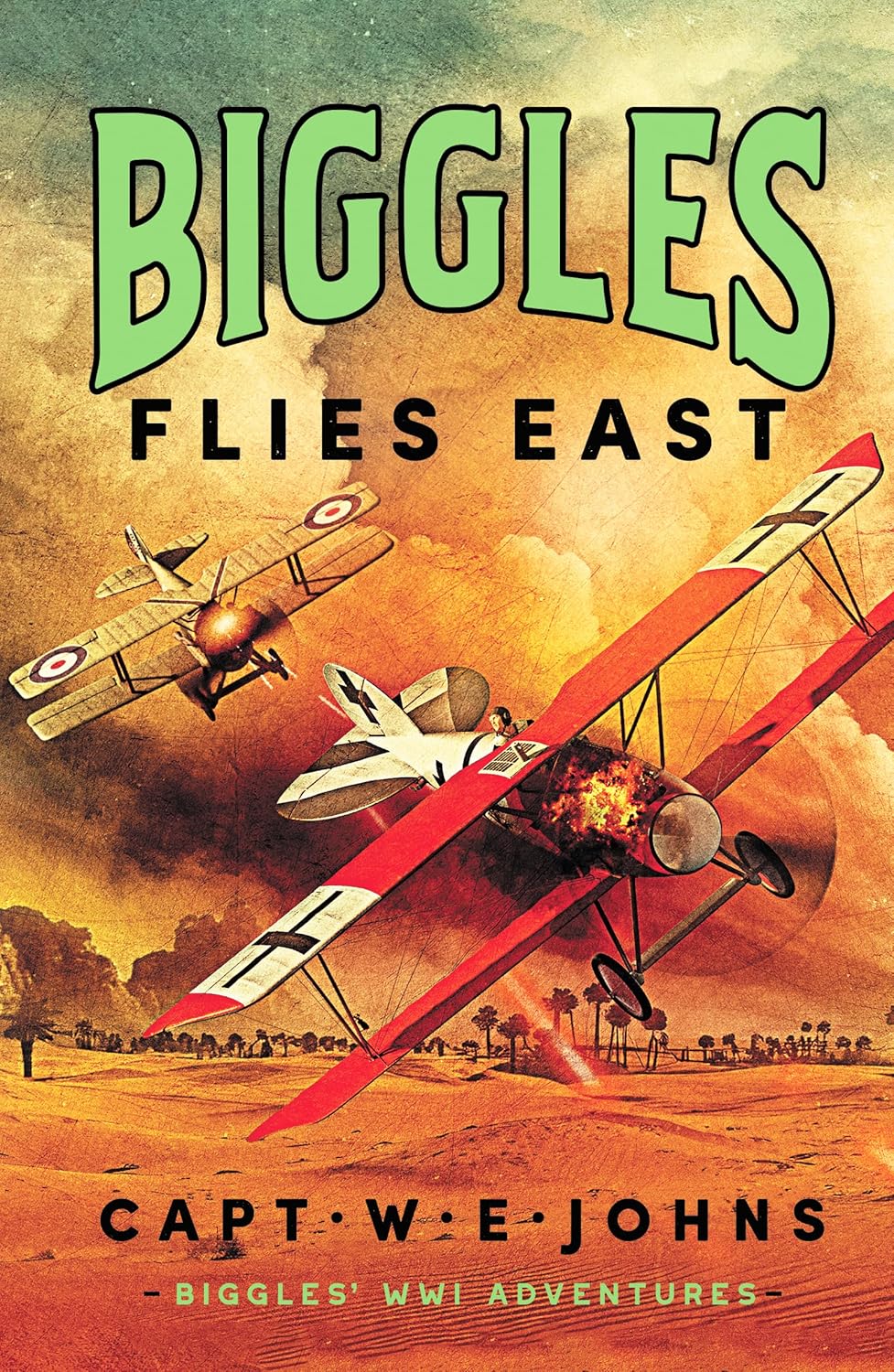The Author
William Earl Johns (February 5, 1893 - 21 June 1968) was an English pilot and writer of adventure stories, who usually wrote under the name Captain W. E. Johns, and is best known as the creator of the ace pilot and adventurer Biggles. He was born in Bengeo, Hertfordshire, England, the son of a tailor and he attended Richard Hale School.
War and flying
In 1913 while living in Swaffham, Norfolk and working as a sanitary inspector, he enlisted in the Territorial Army as a private in the King's Own Royal Regiment (Norfolk Yeomanry). The regiment was mobilised in August 1914 and was sent overseas in September 1915 embarking on SS Olympic. They fought at Gallipoli until December when they were withdrawn to the Suez Canal. In September 1916 Johns transferred to the Machine Gun Corps. While serving on the Salonika front in Greece he was hospitalised with malaria. After recovering he was commissioned into the Royal Flying Corps (RFC) in September 1917 and was posted back to England to learn to fly.
On 1 April 1918, Johns was appointed flying instructor at Marske-by-the-Sea in Cleveland. Aircraft were very unreliable in those days and he promptly wrote off three planes in three days due to engine failure - crashing into the sea, then the sand, and then through a brother-officer’s back door. Later, he was caught in fog over the Tees, missed Hartlepool and narrowly escaped flying into a cliff. Shooting one’s own propeller off with the synchronised forward-mounted machine-gun was an accident, but it happened to Johns twice. He served as a flying instructor until August 1918 when he transferred to the Western Front.
He only performed six weeks of active duty as a bomber pilot before being shot down and taken prisoner on 16th September; he remained imprisoned until the end of the war.
He stayed with the Royal Air Force until 1930, leaving with the rank of Flying Officer. As a recruiting officer, Johns initially rejected T.E. Lawrence (of Arabia) (under a false name) as a RAF recruit.
Writing
Johns' first novel, Mossyface was published in 1922.
After leaving the RAF, Johns became a newspaper air correspondent, as well as editing and illustrating books about flying. At the request of John Hammond Ltd., he created the magazine Popular Flying which first appeared in March 1932. It was in the pages of Popular Flying that Biggles first appeared.
The first Biggles book, The Camels are Coming, was published in August 1932. Unique among children’s writers of the time, from 1935 Johns employed a working-class character as an equal member of the Biggles team - Ginger Habblethwaite, later Hebblethwaite, the son of a Northumberland miner (we never learn his Christian name, and he proclaims himself a Yorkshireman once or twice).
At first, the Biggles stories were credited to "William Earle", but later Johns adopted the more familiar byline "Capt. W. E. Johns". The rank was self-awarded; his actual rank of RAF Flying Officer was equivalent to an army Lieutenant.
Johns edited Popular Flying and later its weekly sister Flying until the beginning of 1939. He was removed because of pressure from the government as he opposed the policy of "appeasement". At that time, Johns also wrote novels, short stories and magazine articles.
During the Second World War, the propaganda value of Johns' books was seen by the Air Ministry.
Johns continued writing Biggles until his death in 1968. In all, nearly a hundred Biggles books were published.
Other less-famous characters created by W. E. Johns include commando Captain Lorrington "Gimlet" King; aviatrix Joan "Worrals" Worralson (essentially a female Biggles, created at the request of the Air Ministry to inspire more young women to join the WAAF); and pioneering astronaut (ex-RAF, naturally) Group Captain Timothy "Tiger" Clinton, who first rocketed into space in 1954.



